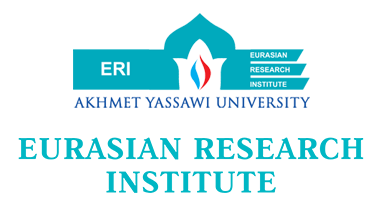What constitutes any country’s most valuable resource? What determines a country’s position on the world stage, and defines its economy, societal structure, and political system?
In the past, the answer to these questions might have been simple. A country’s geography dictated its destiny during the ancient period of human history. Access to certain resources such as wood, water, and metals predetermined the characteristics and nature of human civilizations in a region. Later, in the feudal age, the main determinant of a country’s status was the quantity and quality of arable lands the country possessed. However, with the continuous transformations of human society, we have finally arrived at a point in history where any country’s main resource is its people and their cognitive and creative potential. While natural resources and favorable geographic conditions are still significant, human intelligence and creativity play the primary role in the value-creation process worldwide. This can be observed both on state and private levels – only 3 out of 10 of the highest GDP per Capita countries have their economies closely tied to natural resources [Worldometer, n.d.], and only 1 out of 10 of the biggest companies in the world by market cap is an oil and gas corporation [Forbes India, 2024].
Thus, the dynamic between national states has shifted from the wars of conquest to the struggle for human capital and influence through soft power, resulting in skilled migration or “brain drain”. This global battle for human capital has numerous dimensions and it occurs on many fronts, including the weaponization of such factors of attraction as higher education and labor market opportunities, infrastructural, cultural, ideological, and political comfort and solidarity with the host country, the rule of law and a just judicial system, etc. It has become increasingly important for national states who strive for competitiveness to not only consider their domestic factors of growth, but to pay extra attention to the external growth determinants, both stimulating the inflow of foreign specialists and reducing the outflow of local experts. While this issue requires constant and dynamic analysis from many different actors, it is possible to measure and compare some aspects of countries’ efforts in terms of attraction and retention of human capital based on statistics and surveys from these nation-states.
This is the methodology adopted by the International Institute for Management Development (IMD) World Competitiveness Center, which has pioneered the research on countries’ competitiveness for the last 3 decades [IMD, 2024]. The idea is to shift the vision of what a competitive country might be, as for decades the only focus of most of the statisticians and economists has been solely on countries’ GDP rather than other, sometimes more complex and nuanced metrics. The organization states that “today and in the future, prosperous nations will be defined by how well they guarantee future generations’ prosperity while preserving the living standards of the current population” [IMD, 2024]. The company’s research results in the annual published IMD World Competitiveness Yearbook, which has been consistently put out in the form of an extensive rating for 36 years by this moment. Recently, the rating has been broadened, now including 67 countries. The countries are ranked based on four pillars: Economic Performance, Government Efficiency, Business Efficiency, and Infrastructure; these pillars are further divided into 20 sub-factors, consisting of 336 criteria in total, which are based on hard data and surveys [IMD, 2024].
Regarding the analysis of the results of the most recent rating issue, there are many key factors. Firstly, despite the ever-developing nature of the ranking, it still does not include most post-Soviet and Central Asian states, therefore a direct comparison of Kazakhstan with its neighbors will not be feasible. However, some countries in the list share some historical and cultural background with Kazakhstan, which can be set side-by-side with the Republic for additional context and contrast. Those include the countries that are now active members of the EU – Estonia, Latvia, and Lithuania; the most populous Turkic country in the world – Türkiye, and lastly Mongolia. Secondly, the mentioned countries are ranked in the following order: Lithuania occupies 30th place in the rating, while Estonia is only 3 positions behind, in 33rd place. Kazakhstan is in the 35th place, between Malaysia and Portugal. Kazakhstan is followed by Latvia, which is 10 positions behind, in 45th place of the ranking. Türkiye and Mongolia follow Latvia, occupying 53rd and 61st places, respectively.
The general rating of the countries is further divided into 4 ratings dedicated to each of the aforementioned pillars. Those give much more detailed insights into the nature of each country’s competitiveness. For instance, starting with Kazakhstan, it seems that the main contributor to the Republic’s rather high general ranking is the Government efficiency criteria, where Kazakhstan takes 18th place, higher than any of the compared countries, surpassing even Estonia, which is famous for its compact electronic government [e-Estonia, 2024]. This is possible due to Kazakhstan’s high score for the country’s tax policy, public finance, and business legislation. According to the researchers, the government of Kazakhstan collects taxes, redistributes income, and guarantees social security for its citizens relatively effectively. On the other hand, some of the criteria that require further efforts in the domain of Government efficiency are the rule of law, freedom of the press, and the Democracy Index results, where Kazakhstan falls behind many countries in the list. Another factor that positively affected the country’s overall score is Business efficiency – Kazakhstan landed in 23rd place in the ranking, only 4 positions lower than Lithuania – the only country on the list that scored higher than Kazakhstan. Regarding Kazakhstan’s Business efficiency, there is a set of mixed reasons why the country’s score is so high. Firstly, according to the research, out of 67 countries on the list, Kazakhstan’s entrepreneurs have the lowest fear of failure; secondly, Kazakhstan has the most equitable access of both genders to financial services. Some other reasons include efficient remuneration of management in the country, relatively high level of female participation in the labor force and holding managerial positions, and rather effective use of big data and analytical services in the business. Overall, it may be deduced that social policies in the country aimed at supporting businesses and gender diversity show some level of recognizable effectiveness.
The other two pillars drag the country’s score down – in terms of Economic performance Kazakhstan is only ranked 43rd, and the country’s worst score is within the domain of Infrastructure – 49th place out of 67. The worst aspects of the Economic performance pillar summed up paint a picture of a rather low complexity economy that does not trade with the world enough, and most of its trade is done in natural resources, which results in high domestic prices for the consumers, especially when it comes to food. The silver lining is the country’s continuous economic growth and relatively low youth unemployment and exclusion. The rating once again highlights a critical necessity for an economic shift towards a more diversified and value-adding economy. The infrastructure represents the Republic’s most troubled domain – according to the researchers, there are multiple problems to be addressed, they include Scientific Infrastructure, Health and Environment, and Technological Infrastructure. In other words, this means that Kazakhstan still under-invests in important areas such as healthcare, education, and R&D. As a result, the average life expectancy of Kazakhstani citizens is one of the lowest of 67 countries on the list. Additionally, the country does not use its water and energy resources effectively, and also the contribution of medium and high-tech value to the economy is minimal. One of the results of these crucial under-investments is a relatively low human development index (HDI) in the country, which is also integrated into the competitiveness score. HDI “is a summary measure of average achievement in key dimensions of human development: a long and healthy life, being knowledgeable and having a decent standard of living” [UNDP, n.d.]; and within it, Kazakhstan is placed 67th, noticeably lower than both the Baltic states, which are ranked between 30th and 38th places, and Türkiye, ranked 45th.
While a snapshot of a country’s current situation matters a lot, however, it’s the trends that are important in the long run. Regarding those, it can be observed that overall, in terms of competitiveness Kazakhstan has demonstrated steady growth in recent years – the country has climbed from 42nd to 35th position in the general ranking. The same can be said about 3 pillars out of 4, with Infrastructure being the country’s main problem and the worst-performing pillar across five years – it demonstrated a rather mediocre growth that shifted Kazakhstan from the 51st to 49th place in the respective ranking. Moreover, there was a recent negative trend in this domain – since 2022 the country has fallen by 3 positions, for instance, Education, Health and Environment, Scientific Infrastructure, and Basic Infrastructure have all worsened between 2023 and 2024. The time will tell if further degradation in Infrastructure becomes the country’s new trend or if it remains a small post-COVID-period nuisance to be soon forgotten. Decision-makers within the country must bring much attention to this issue and support the currently flawed and underfunded spheres.
The case of Türkiye is a rather interesting one – despite having one of the lowest scores in terms of Government Efficiency (63rd out of 67 countries) and below-average scores in terms of Infrastructure and Business Efficiency, the Republic was able to score very high in the Economic Performance domain, getting ahead of all the compared countries. This also mirrors the story of Mongolia within the ranking, which has even lower scores in terms of Infrastructure and Business Efficiency, yet manages to demonstrate a considerable Economic Performance, placed 2nd in the respective pillar within the comparison list. Latvia, Lithuania, and Estonia, on the other hand consistently score around or slightly above average in all categories but Economic Performance. A further analysis into this peculiarity reveals that the main factor behind those numbers is the real GDP growth – the Baltic countries had a GDP contraction in 2023 because of the Russian invasion of Ukraine and the subsequent painful estrangement from the Russian market through sanctions [Luminor, 2024]. This looks especially problematic compared to Türkiye’s 4.52% and Mongolia’s 7% 2023 GDP growth figures [World Bank, n.d.]. Thus, it can be determined that in this case, the role of substantial outside factors temporarily outweighed internal efforts. Yet, any country should still strive for sustainable internally fueled growth of its attractiveness for local and foreign talent to win the long-run race for the most important resource there is in the world – people.
References
e-Estonia (2024). Estonia is among the best countries to provide digital public services according to the OECD. e-Estonia. Retrieved from https://e-estonia.com/estonia-among-best-countries-provide-digital-public-services. Accessed on 07.09.2024.
Forbes India (2024). Top 10 largest companies in the world by market valuation in 2024: List of 10 biggest companies in the world. Retrieved from https://www.forbesindia.com/article/news/top-10-largest-companies-in-the-world-by-market-valuation-in-2024/81801/1. Accessed on 08.09.2024.
International Institute for Management Development (IMD) (2024). World Competitiveness Yearbook 2024. IMD. Retrieved from https://www.imd.org/wcc/world-competitiveness-yearbook Accessed on. 12.09.2024.
Luminor (2024). Spring 2024: Baltic and Global Economic Outlook. Retrieved from https://www.luminor.lv/en/forecasts/spring-2024-baltic-and-global-economic-outlook. Accessed on 12.09.2024.
United Nations Development Programme (UNDP) (n.d.). Human Development Index (HDI). Retrieved from https://hdr.undp.org/data-center/human-development-index#/indicies/HDI Accessed on 09.09.2024.
Worldometer (n.d.). GDP per capita. Worldometer. Retrieved from https://www.worldometers.info/gdp/gdp-per-capita/. Accessed on 10.09.2024.
World Bank (n.d.). GDP growth (annual %): Turkey, Mongolia. Retrieved from https://data.worldbank.org/indicator/NY.GDP.MKTP.KD.ZG?end=2023&locations=TR-MN&start=2023&view=bar. Accessed on 13.09.2024.
Note: The views expressed in this blog are the author’s own and do not necessarily reflect the Institute’s editorial policy.

